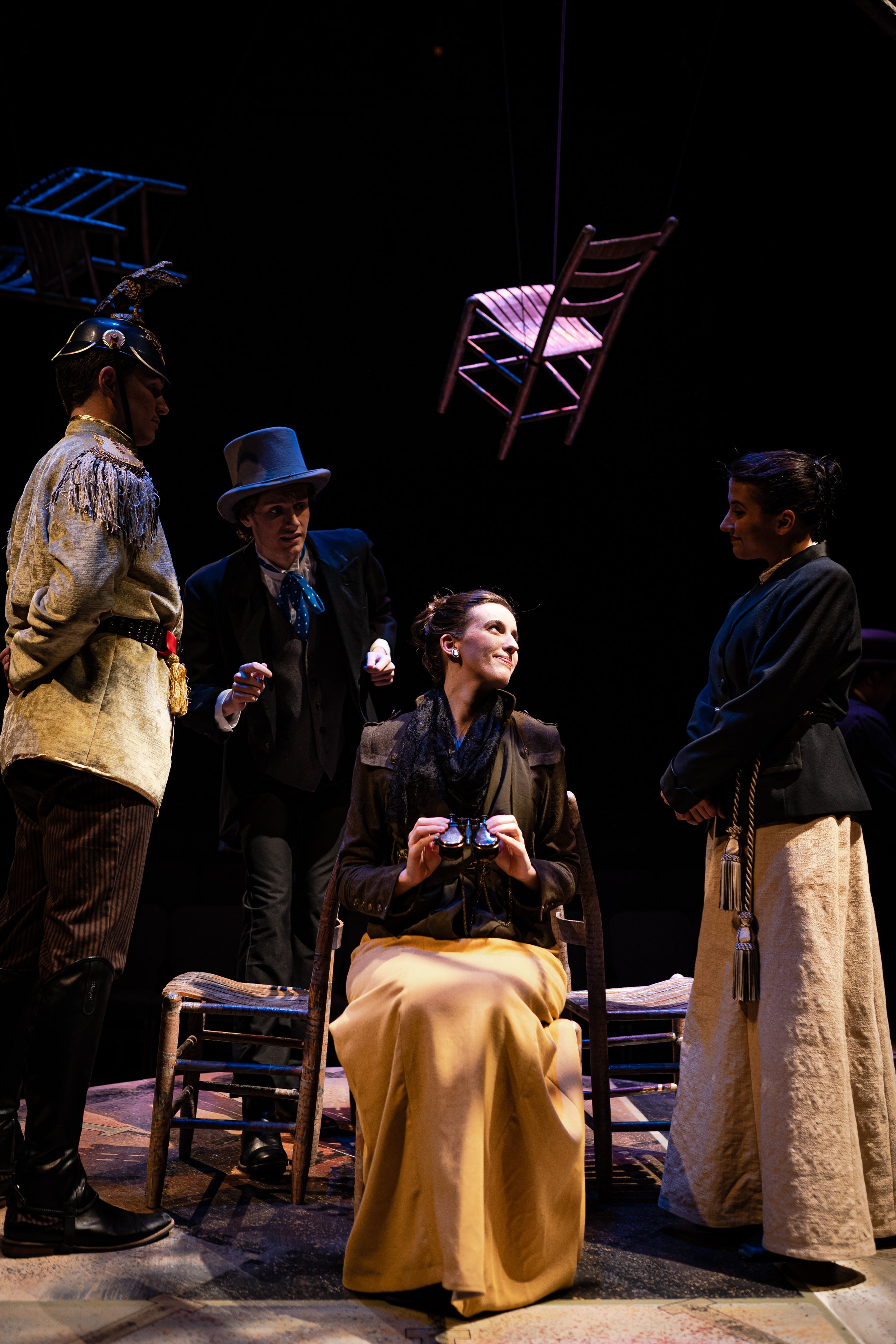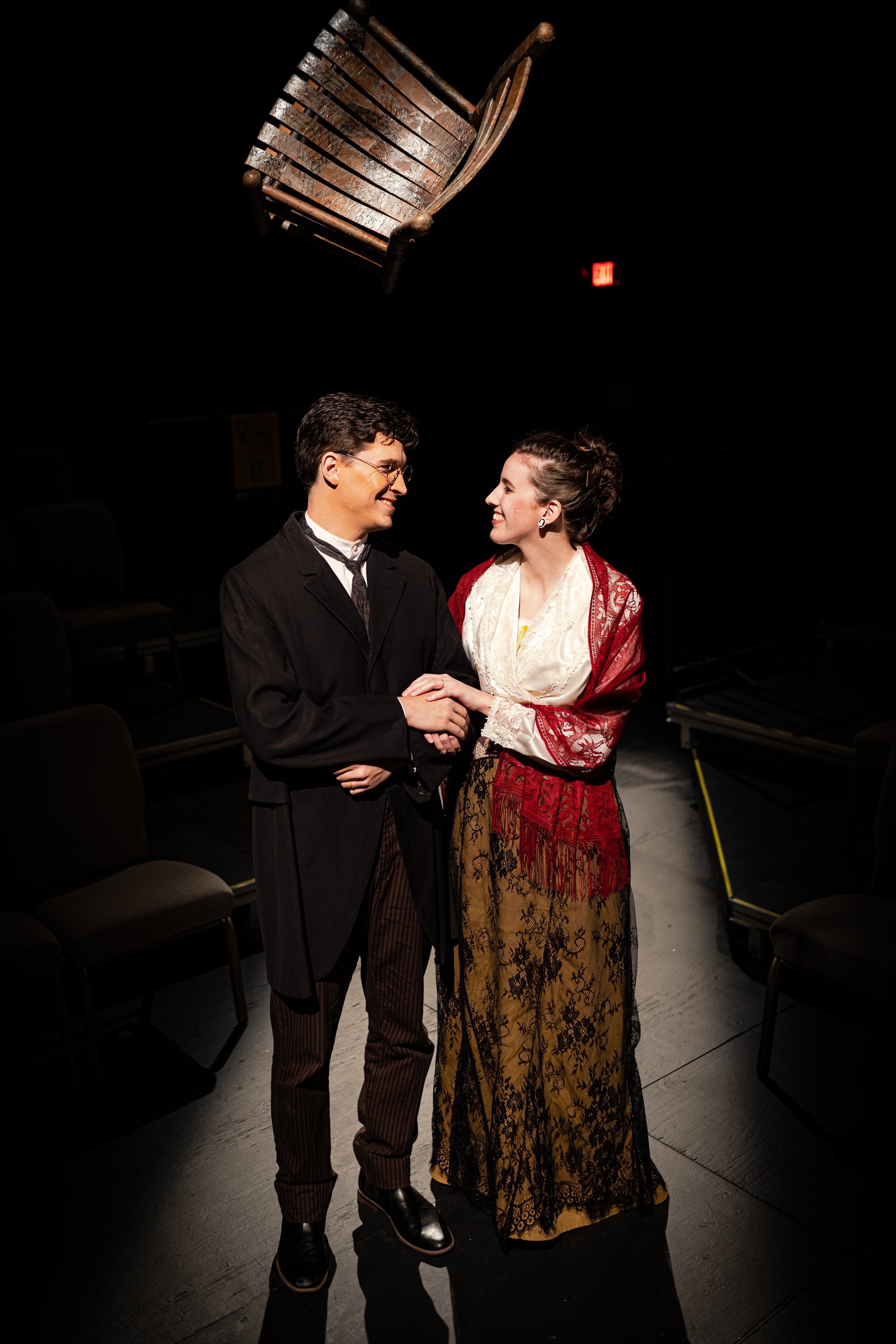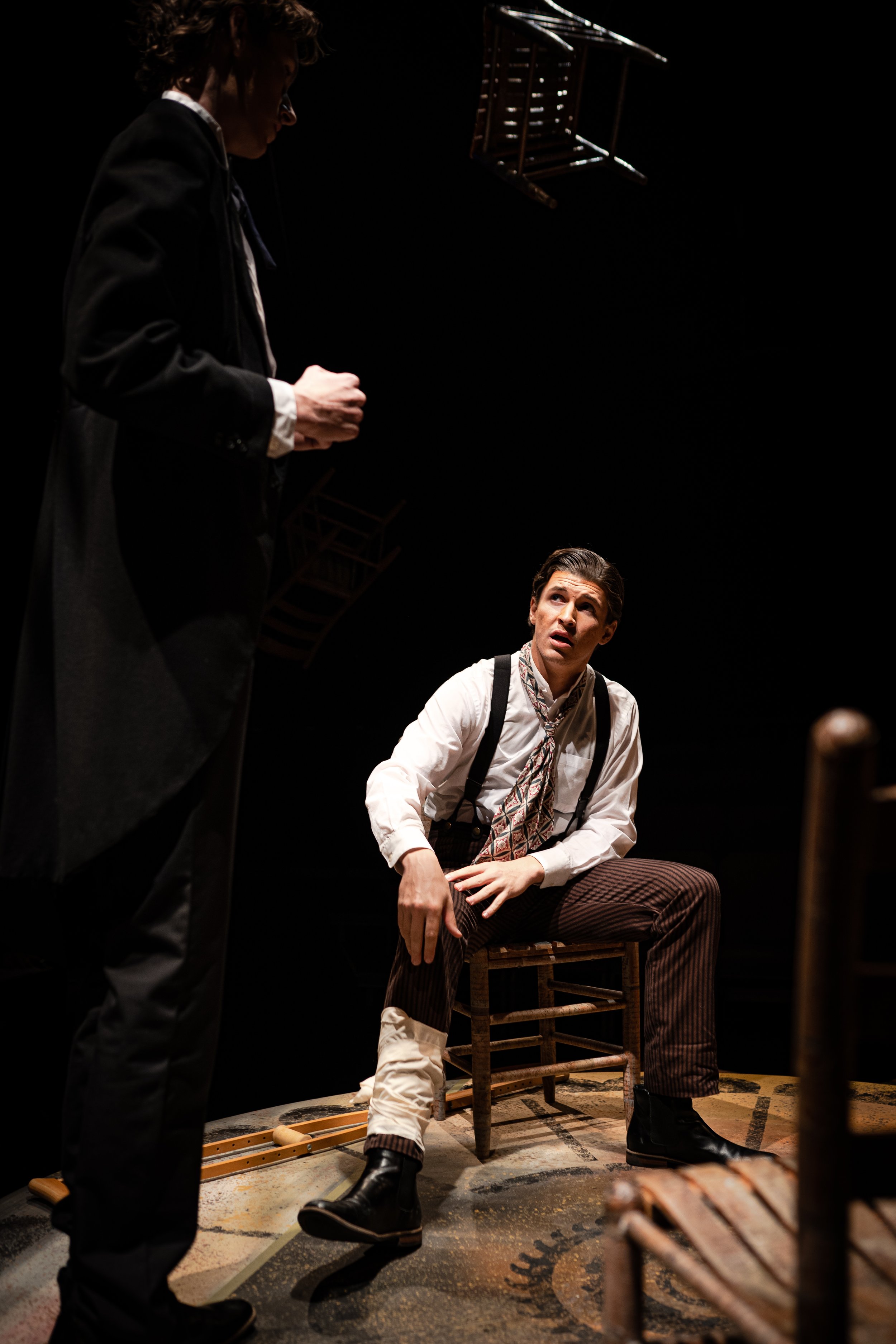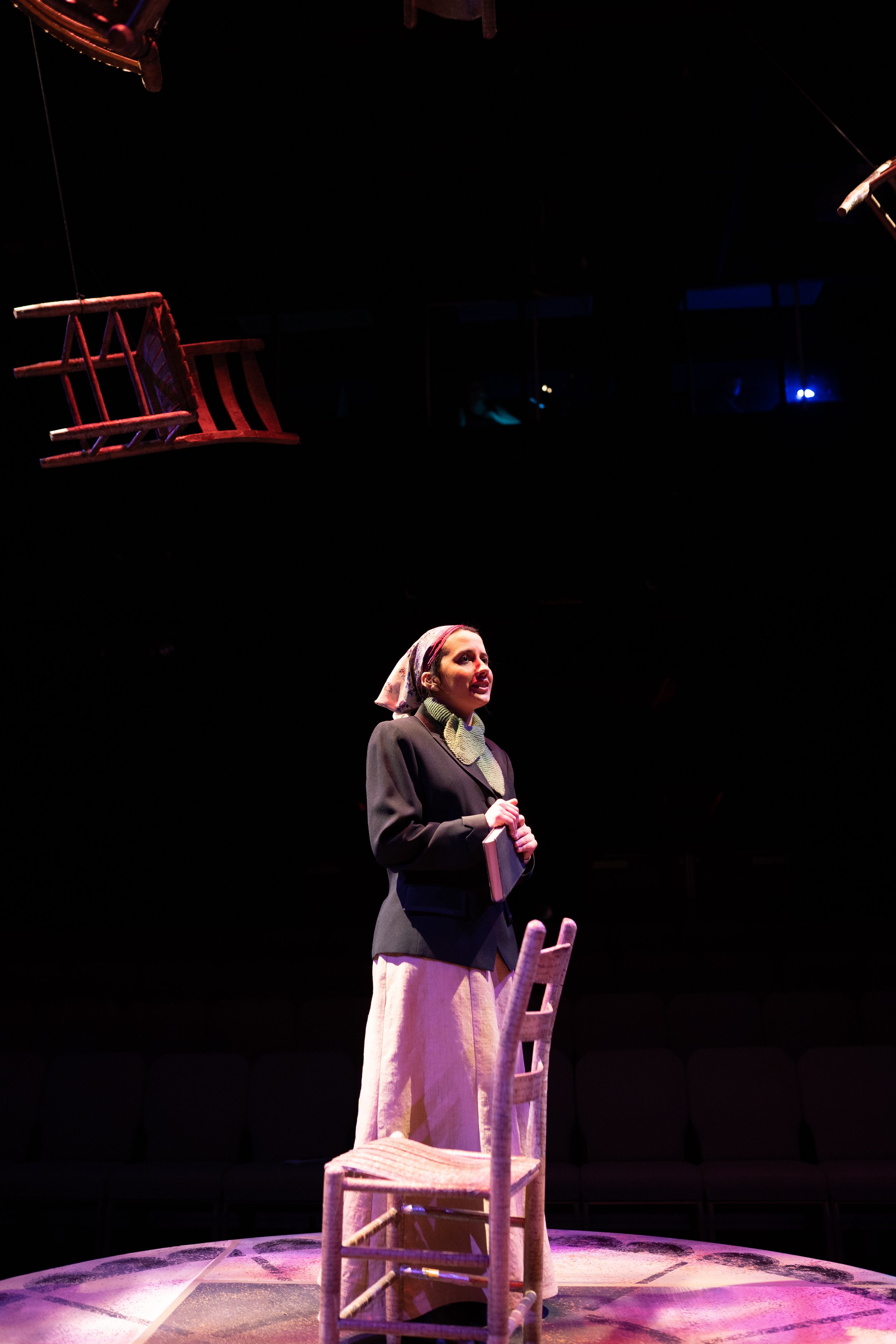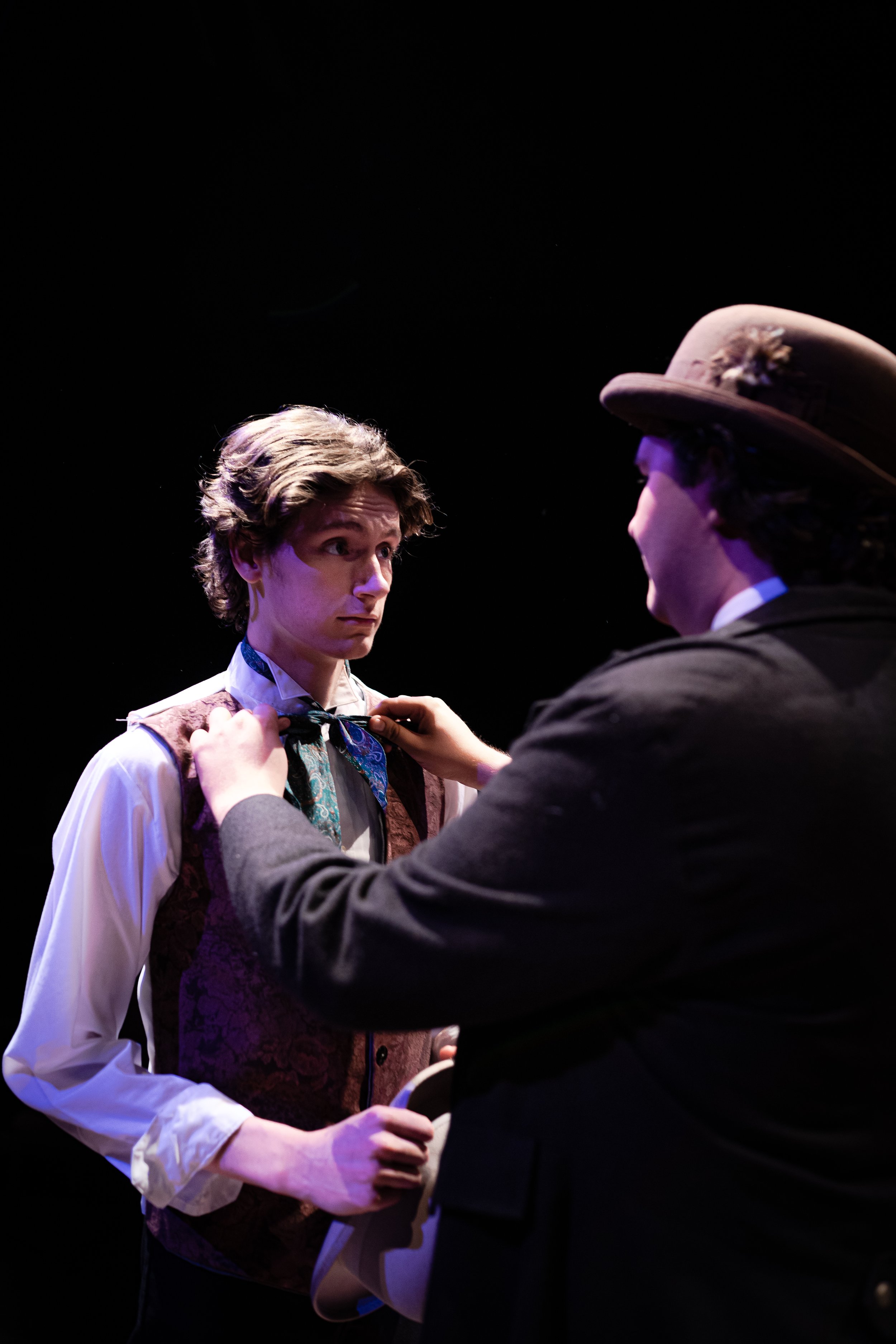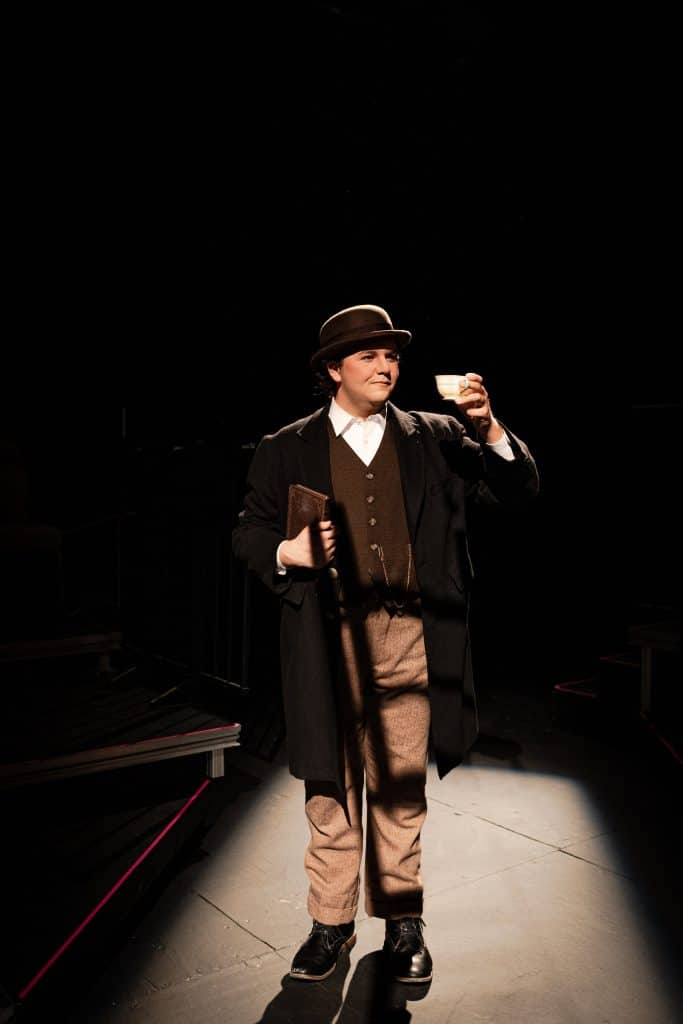
The art of wear: costuming in the NGU theatre department
Keely Lyons, Staff Writer
Photo by Veronica Rogers
For some, clothing presents itself as a means of self-expression. For the actor, costuming encourages metamorphosis to take its hold. At the North Greenville school of theatre, the chrysalis is woven by none other than Cynthia Lohrmann, assistant professor of theatre costume and design.
Regarding the creative process for costuming, it is important to read the production once to process the storyline and then a second time to find little clues the author tells you. The costumer should scan the script carefully for hints within the dialogue and stage notes, said Lohrmann.
To give an example of things within the script to look for, Lohrmann said, “You’re going to notice what the author has told you, like, ‘She came in in her black dress and the right arm ripped.’ So if it’s in the script, or if they are saying [in the dialogue], ‘Could you hang up my coat?’ You’ll know she’s got a coat on.”
Photo by Veronica Rogers
During the design process, the costume designer has to think of what the outfit is supposed to be able to do and its functionality. Lohrmann said, “[I had a script] that said ‘She twirls around and said she spend a whole month’s salary on it.’ I knew it had to be special and I knew it hard to twirl.”
Lohrmann ended up finding a skirt that had the movement the character needed to create a dramatic twirl. Not only did the dress have the proper functionality, but it also had a large bow. The actress playing the character noticed this and said it was like she was a presenting herself as a gift to the man she is in love with, Lohrmann said.
Because no two people think exactly alike, it is crucial to sit down and hear your director and make sure the two of you are on the same page. The next step is meeting with them to understand their vision for the production. You can see several productions or movies of the same stories and the production’s look is completely different, based on that director, said Lohrmann.
Photo by Veronica Rogers
At times, hearing the actor’s interpretation can change the feel of the character, specifically, the infections they use and the way they craft the character. Lohrmann said, “That’s why I like to go to table reads if I can because you get some information from the way the actor reads the script.”
Actors spend weeks developing their character while memorizing their lines, and Lohrmann likes to talk to actors about what they have discovered about their character while fitting them for a costume. As she measures their waist and arms, Lohrmann said she asks them questions like, “What do you think this guy is thinking? Is he diabolical?” Lorhmann said, “You want to do a character analysis [from their perspective].”
In the instance of producing costumes for a show, the designer can have a lot of creative leeway. However, that can change depending on the historical setting and the tone of the story the director is trying to set. In reference to NGU’s past production of The Good Doctor, Lohrmann said, “It was set in the 1890’s, so the women should’ve had a bigger bustle. They were playing so many different characters [in the production] they would have one skirt, and so I would add the bustles and other things to it.”
To adapt to the functionality needed for movement in the show, Lohrmann said, “Once I saw [how small] the stage was, I thought, ‘Wow, there’s not a whole lot of acting room here. There’s not a lot of room for bustles.’ I sort of simplified the way it was made.”
Photo by Veronica Rogers
After the costumes are finished getting sewn, patched and sometimes ripped, the actors get to experience the positive effects of costuming on the actor’s psyche. Abigail Dover, theatre major at NGU said, “I will use the most recent example from The Good Doctor. Doing a period piece is a little bit different because not only do you have to figure out how the character moves, but also how the character moves in the appropriate time period.”
Dover said, “From the beginning of the rehearsal process, we were rehearsing in rehearsal skirts and corsets to remind us that we have to stand up straight and we can’t bend at the waist like we normally do. All the costumes in that show were so fantastic for characterization.”
Referring to the script consistently for details on the background of the character is an important aspect of the character’s physical development. Lohrmann said, “There are times in the script where it will say ‘Mary Jo is 40 and is bright and bubbly. Her sister is her evil twin.” The process means getting to know them so well that you become them in a way and understand what they would wear and why, said Lohrmann.
Photo by Veronica Rogers
